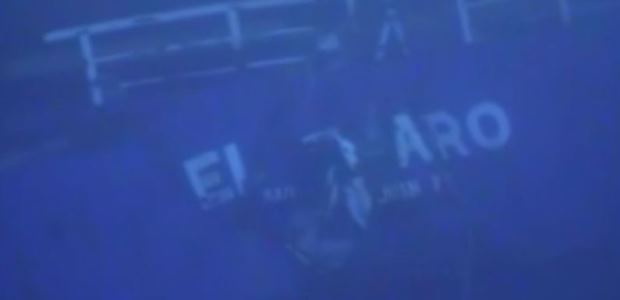
El Faro's Captain, Owner Faulted by NTSB
He could have steered the ship away from the hurricane, the safety board found, and it concluded poor oversight and an inadequate safety management system of the ship's operator, TOTE, contributed to the sinking, wihch killed 33 crew members.
The National Transportation Safety Board this week concluded that the loss of the cargo ship El Faro, which sank on Oct. 1, 2015, during Hurricane Joaquin while en route to Puerto Rico, was caused by the captain's failure to avoid sailing into a hurricane despite numerous opportunities to choose a course away from hazardous weather. The sinking killed all 33 crew members, making this the deadliest accident involving a U.S.-flagged vessel in more than 30 years, according to the safety board.
The 790-foot ship was traveling from Jacksonville to San Juan, Puerto Rico, when it sank.
"We may never understand why the captain failed to heed his crew's concerns about sailing into the path of a hurricane or why he refused to chart a safer course away from such dangerous weather. But we know all too well the devastating consequences of those decisions," said NTSB Chairman Robert L. Sumwalt.
NTSB investigators worked with the U.S. military and other partners to locate the wreckage and recover the ship's voyage data recorder from the Atlantic Ocean at a depth of more than 15,000 feet. The board found that, after the ship departed on Sept. 29, 2015, it could have steered clear of the storm that later became a Category 4 hurricane, but the captain consulted outdated weather forecasts and ignoring the suggestions of his bridge officers to take the ship farther south and away from the storm.
That choice meant that the hurricane pounded the ship with 35-foot seas and 100-mph winds. "As the ship sailed into the outer bands of the storm, about five hours prior to the sinking, its speed decreased and it began to list to starboard due to severe wind and seas," the board's news release stated. "In the last few hours of the voyage, the crew struggled to deal with a cascading series of events, any one of which could have endangered the ship on its own. Seawater entered the ship through cargo loading and other openings on a partially enclosed deck in the ship's hull, pooled on the starboard side and poured through an open hatch into a cargo hold. The hold began to fill with seawater, and automobiles in the hold broke free of lashings and likely ruptured a fire main pipe that could have allowed thousands of gallons of seawater per minute into the ship – faster than could be removed by bilge pumps.
"About 90 minutes before the sinking the listing ship lost its propulsion and was unable to maneuver, leaving it at the mercy of the sea. Although the captain ordered the crew to abandon ship when the sinking was imminent, the crew's chances of survival were significantly reduced because El Faro was equipped with life rafts and open uncovered lifeboats, which met requirements but were ineffective in hurricane conditions."
The board also concluded poor oversight and an inadequate safety management system of the ship's operator, TOTE, contributed to the sinking.
"Although El Faro and its crew should never have found themselves in such treacherous weather, that ship was not destined to sink," said Sumwalt. "If the crew had more information about the status of the hatches, how to best manage the flooding situation, and the ship's vulnerabilities when in a sustained list, the accident might have been prevented."
The board made 29 recommendations to the U.S. Coast Guard, two to the Federal Communications Commission, one to the National Ocean and Atmospheric Administration, nine to the International Association of Classification Societies, one to the American Bureau of Shipping, one to Furuno Electric Company, and 10 to TOTE Services.
The complete accident report will be available in several weeks. The executive summary, including the findings, probable cause, and safety recommendations, is available at https://go.usa.gov/xnRAn.